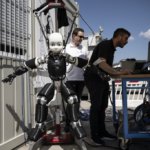
“Children must be taught how to think, not what to think.”– Margaret Mead
Experiential education is a practical, fun and engaging way to motivate easily-distracted K12 learners.
Over the years, it has grown in popularity as a proactive learning method that broadens students’ skill sets and introduces them to service-oriented projects that benefit the community and themselves.
As the Association for Experiential Education (AEE) explains, “Experiential education occurs when educators purposefully engage with learners in direct experience and focused reflection in order to increase knowledge, develop skills, clarify values and develop people’s capacity to contribute to their communities.”
So why should K12 education systems ensure that experiential learning plans are included?

Does experiential education help children to experiment with alternative learning tasks? Source: Frank Wang/Unsplash
As a term used to describe kindergarten (K) and the 1st through to 12th grade (1-12), students in the US and other countries are referred to as K12 learners.
But as the pressure for K12 education systems to keep up-to-date with tech-infused content as new technologies intensify, where does experiential learning fit in?
To help answer this question, technology mastermind CISCO highlighted the “four C’s of learning” in their Rethinking Teaching 2018 report – all of which enable effective experiential learning plans in K12 schools.
As the report states, the four important C’s that boost academic success are critical thinking, collaboration, creativity and communication.
By taking children outside of the classroom and presenting them with creative projects that push their communication skills to the next level and encourage them to practice the art of critical thinking, experiential learning styles could be crucial for a balanced development.
Education through experience equates to learning by doing.
If learners are stimulated through practical learning projects and exciting new tasks, they’ll soon understand the importance of collaboration – a skill that’s central to their future employability – as they work alongside classmates.
Once they experience a K12 education intertwined with these four experiential C’s, they may be inspired to work on their independent thinking skills and create projects, initiatives and academic aspirations of their own.
With the rise of experiential education, young learners are beginning to see the world through a diverse, dynamic lens.
Experiential Education Foundations: An Online Course for Teachers: https://t.co/m2VFYIHpSk via @YouTube
— AEE (@AssnforEE) January 23, 2018
And as American cultural anthropologist Margaret Mead once said, children be taught how to think, not what to think.
Liked this? Then you’ll love…
Four ingredients for student success at top British boarding schools
Influential institutions that combine experiential learning with creative education







